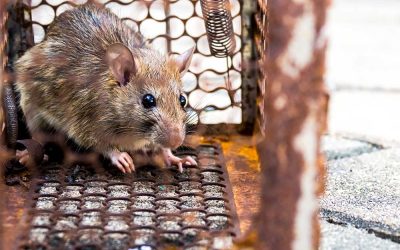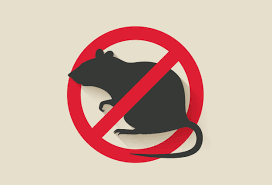No pest destroys your home faster than termites. As they creep through your walls, termite workers slowly break down wood to feast on the cellulose.
What Types of Termites Live in Texas?
Different species may leave behind termite droppings as they forage through your home. Here’s what you need to know about termites (and termite droppings) you may see in Texas.
Subterranean Termites
In Texas, subterranean termites are some of the most common termites that NTX Best Pest customers find in their homes.
Rather than taking up shop within your walls, subterranean termites prefer to nest underground. They connect to your home through slim mud tubing that may climb up the side of your house.
Worker termites will enter buildings to forage for cellulose and return to their nests. These pests are responsible for feeding the reproductive members of the colony and caring for the young.
While there are different species of subterranean termites, one particularly destructive type lives in Texas. The Formosan subterranean termite is native to China but has spread throughout many Asian countries and the United States.
Despite sharing many of the same qualities as other subterranean termites, the Formosan species can have many more within its ranks. According to the Univerisity of Florida’s entomology department, a colony could contain a million or more termites!
Typical subterranean termites only contain a few thousand within well-established colonies, so Formosan termites can cause major damage if their large numbers are left untreated.
Drywood Termites
Drywood termites also affect many Texas residents. Unlike subterranean termites, drywood termites do not create underground colonies outside your home. These pests don’t need the soil’s moisture and can survive in humid aboveground conditions.
Many colonies will stick to trees, logs, or stumps they find outdoors. However, drywood termites will often live within your walls. Instead of returning to outdoor nesting sites with their foraged goods, drywood termites prefer to live alongside the wood they consume.
Because they live in your home, they can easily cause damage. Lacking the mud tubes indicative of a subterranean termite infestation, you may not notice drywood termites for a while. Termite droppings often inform homeowners of the pests inside their homes.
What do Termite Droppings Look Like?
At first glance, it’s easy to mistake termite droppings for something else, especially if you’ve never seen them before.
Also called frass, termite droppings often mimic the appearance of sand or coffee grounds. The type of wood in your home may affect the color of termite droppings, with lighter wood causing the feces to take on a brighter color.
While the tiny pellets are small, termite droppings can quickly pile up. Drywood termites typically eject their feces from their colonies as they burrow in wood. You may notice mounds of termite droppings around the small holes they create in your walls.
Subterranean termite droppings are hard to spot as these pests will utilize their waste to line the inside of their mud tubes and colonies. While rather disgusting, their innovations help the construction of their intricate tunnels.
Dampwood termites are not common in many Texas regions, but some areas can still suffer from these pests. Like drywood termites, dampwood termites don’t require access to the soil to sustain themselves.
Instead, dampwood termites will create their colonies within moist trees, logs, or stumps, preferring water-damaged or rotting wood. They use their feces to seal themselves within their nests, so it’s unlikely you’ll see termite droppings when you have a dampwood termite infestation.
How to Clean up Termite Droppings
Termites can wrack up a hefty repair bill and still leave their mess for you to sweep! Luckily, it’s easy to clean up termite droppings. To tidy up, you can:
- Vacuum their waste
- Use a broom and sweep it up
- Wipe it away with a cloth or paper towel
- Disinfect the area with an indoor cleaner
- Repair any damaged areas that drywood termites created to remove the frass
Avoid handling the frass directly with your hands. You can use a pair of gloves to protect yourself when you get down and dirty to clean termite droppings.
What are the Signs of a Termite Infestation?
Termites can be hard to spot, but here are some tips to help you identify termites in your home!
Termite Droppings
Of course, one of the easiest ways to spot a drywood termite is by termite droppings. You can locate an infestation by looking around for the light or dark-colored frass along your baseboards.
If you have termites in other wooden structures, like doors or furniture, you may see the feces littering your floor.
Mud Tubes
Instead of frass, mud tubes can indicate a subterranean termite infestation. These tubes may crawl up the side of your home to provide termites access to the inside.
While they look insignificant, these tunnels carry termites to and from your home. The mud tubes consist of termite feces, dirt, and saliva pressed together to form these small pathways.
Discarded Wings
If you see wings in your home, it can indicate the presence of two insects: carpenter ants or termites. Many homeowners mistake flying carpenter ants for termites as they exit to mate.
Unlike termites, carpenter ants don’t consume the cellulose inside of wood, meaning their damage is typically less severe than termites. However, carpenter ants are capable of causing significant deterioration.
As a termite colony expands, the queen eventually begins to produce reproductive colony members, also called alates or swarmers. Born with wings, these insects will stick with the colony until it’s time to commence mating.
After the reproductive alates mate, they will shed their wings to start creating a new colony. If you spot wings in your home or even see the alates, you could have a longstanding infestation within your walls.
How to Remove Termites
Termites are costly and can create thousands in home damage when they’re left alone. Removing termites from your home or yard is the only way to eliminate an active infestation.
Because these pests often live in your walls or deep underground, it can be difficult to combat them alone. There aren’t many commercially available termite treatments that can keep these insects at bay.
To solve your termite problem, give NTX Best Pest a call! To combat termites, we use the Sentricon® system that actively eliminates the termites plaguing your home. Our technicians can even set up termite monitoring to survey potential new infestations.
If you suspect you have termites, don’t hesitate to contact us today!



0 Comments